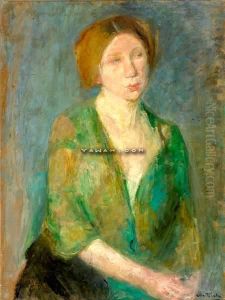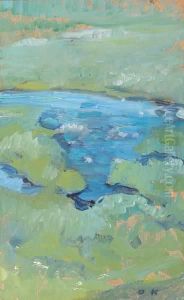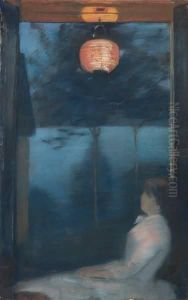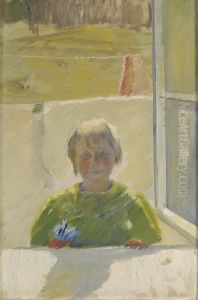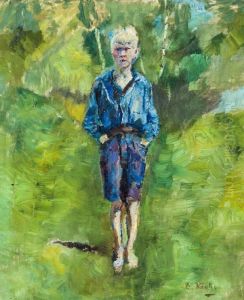Othilia, Oda Krohg Paintings
Oda Krohg, born Sina Othilia Lasson in 1860 in Åsgårdstrand, Norway, was a pivotal figure in the Norwegian bohemian and artistic movements of the late 19th and early 20th centuries. She was not only a talented painter but also a central figure in the cultural life of Oslo (then Christiania) and Paris, influencing and being influenced by the major artistic personalities of her time. Her life and work were deeply intertwined with the radical cultural and social movements of her era, making her a symbol of female independence and artistic freedom.
Oda married the painter Christian Krohg, who was a leading figure in the naturalist movement in Norway, and her work often reflected the naturalist and later, the symbolist movements, though with a distinctly personal and often more vibrant palette. She studied painting under Christian Krohg, who was not only her teacher but also her greatest supporter and critic. Her art frequently depicted the bohemian lifestyle, with its emphasis on free love, artistic freedom, and social rebellion, themes that were also central to her personal life.
In Paris, Oda Krohg became part of the avant-garde community, associating with artists such as Edvard Munch and the writer Hans Jæger, the latter being a central figure in the bohemian movement in Norway. Her salon in Paris and later in Oslo became a meeting place for many prominent artists and writers of the time. Through her art and her salon, Oda played a crucial role in the development of modernist ideas in Norway.
Oda Krohg's most significant works often feature bold, expressive uses of color and complex compositions that reflect her personal experiences and the bohemian values of her social circle. Her portraits, in particular, capture the spirit and character of her subjects with depth and sensitivity. Despite facing societal criticism for her unconventional lifestyle and the themes of her art, Oda continued to paint and exhibit her work throughout her life.
Oda Krohg passed away in 1935, leaving behind a legacy that has continued to influence Norwegian art and culture. Her life and work remain a testament to her unwavering commitment to artistic expression and personal freedom, making her one of the most fascinating and enduring figures of the Scandinavian art scene of her time.
